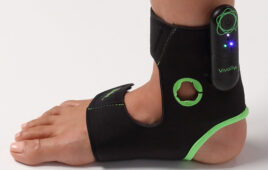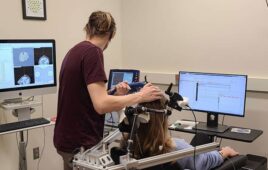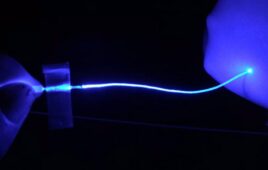BioTime, Inc., a biotechnology company that develops and markets products in the field of regenerative medicine reported today the publication of a peer-reviewed scientific paper on the successful generation of human cells with markers of particular cell types in the human brain, potentially useful in the treatment of neurological diseases such as Alzheimer’s disease. The paper published online (ahead of print) in the journal , characterizes the cells generated from human embryonic stem cells using BioTime’s proprietary PureStem ™ technology. The study reports that the new cell lines show the potential to become cartilage and bone as well as brain-associated cells such as membranes surrounding the brain called meninges and choroid plexus (the structure in the brain that creates cerebrospinal fluid). These novel expandable and highly purified progenitors have properties that may have a wide array of future applications in the practice of orthopedics and neurology.
In the study titled “Human embryonic stem cell-derived neural crest cells capable of expressing markers of osteochondral or meningeal–choroid plexus differentiation,” BioTime scientists published for the first time the unique properties of two cell lines designated E69 and T42 made using the company’s PureStem ™ technology. PureStem ™ allows the scalable expansion of large numbers of desired cell types starting with human embryonic stem cells. The PureStem ™ cell lines have the advantage that they have partially committed to become one of the many tissues of the body. An additional competitive feature of PureStem ™ relates to the relative ease of producing large quantities of these cells in a highly purified and identified state, potentially leading to improved quality control. The company has produced >200 diverse progenitors of the human body using this technology. The cells described in today’s scientific publication are progenitors to tissues of the developing head called “neural crest” cells. BioTime scientists demonstrated in the publication that the cells could be induced to become diverse brain-associated cells by altering the exposure of the cells to specific growth factors. The company has filed for certain patent protection relating to the cells and the methods described in the publication.
BioTime from time to time publishes scientific discoveries, such as those reported today in Regenerative Medicine, to accelerate the pace of research and discovery for devastating diseases such as Alzheimer’s disease, and to increase awareness of the cell lines in the medical research markets. BioTime’s subsidiary ES Cell International offers the cell lines for sale for research use only.
“To our knowledge, this is the first report of the isolation of these important cell types,” said Michael D. West, Ph.D., BioTime’s Chief Executive Officer. “The purity and scalability of the cells makes it an easy matter for us to distribute them to the research markets. To date, we have published data in the scientific literature relating to 10 of the >200 cell types we have isolated from pluripotent stem cells. We plan to continue to publish on additional cell types in the future.”
Authors of today’s publication included Hal Sternberg, Jianjie Jiang, Pamela Sim, and Michael D. West of BioTime; Francois Binette of OrthoCyte Corporation; Ariel Rinon, Ron Edgar, and Alina Shitrit of LifeMap Sciences; David Larocca of ReCyte Therapeutics; Jennifer Kidd and Karen B. Chapman of OncoCyte Corporation; and Jeffrey Janus of ES Cell International. Additional information on PureStem ™ technology presented by BioTime’s CEO, Dr. Michael West, is available on BioTime’s web site in its video update series.




